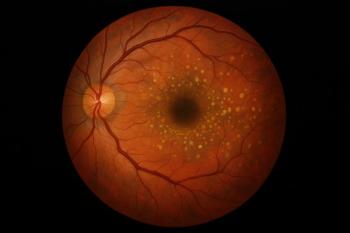
Socioeconomic Status Is the Biggest Reason Women Don’t Get Breast Cancer Screening
Women experiencing high levels of poverty and those in impoverished rural regions are less likely to get screened for breast cancer, find a new review of studies that have assessed social determinants of health.
Factors such as income, education level, employment status, birthplace/citizenship, marital status, social support and number of children were among the social determinants of health (SDOH) that impact whether women receive breast cancer screening, according to a review of 72 observational studies published between 2013 and 2023. The analysis was published recently in
“One of the most influential roles of social determinants of health lies within the realm of equitable access,” Lea Sacca, Ph.D., senior author and an assistant professor in the Department of Population Health and Social Medicine, Florida Atlantic University’s Schmidt College of Medicine, said in a
Researchers at Florida Atlantic University’s Schmidt College of Medicine wanted to determine which social determinants of health were associated with breast cancer screening behavior. They did a literature review of studies in the PubMed, Embase, Web of Science, and Cochrane databases. A total of 72 studies were selected for analysis, including cross-sectional studies; cohort studies; and case–control studies.
The researchers identified the social determinants based on the
Researchers found that socioeconomic status was the factor that had the highest frequency among the studies analyzed for breast cancer screening. The key elements that impacted this were income, education level, employment status, birthplace/citizenship, marital status, social support and number of children. In this analysis, researchers found that 38% of the studies exhibited statistical significance in the economic stability category, with income level (27%) being the most common sub-categorical indicator emphasized.
Women with estimated household incomes greater than $38,100 have been found to have rates of repeat mammography higher than those of women below $25,399. Both high levels of poverty and impoverished rural regions were associated with lower screening rates. In addition to household income, food security was another influential factor of mammography rates.
Additionally, researchers found that access to healthcare was another factor that emerged from their review. Subcategories such as insurance status, accessibility of healthcare services and provider, insurance coverage, access to mammography facilities, insurance copayments, and county uninsured rate were important factors that contributed lower breast cancer screening rates. In many of the studies in the review, insurance status was the most reported sub-categorical factor of access to quality health care. Many of the studies in the review demonstrated a strong association between a lack of health insurance and a lower rate of breast cancer screening.
“Structural efforts to improve health insurance coverage, language proficiency and transportation services could be beneficial,” Sacca said. “These steps will need to involve the local community to develop community-tailored educational campaigns to reinforce the importance of establishing regular mammogram screenings.”
Race/ethnicity, sex/gender and sexual orientation were additional factors reported. Fifty-eight percent of the studies showed statistical significance in the social and community context category, with the highest sub-categories being age and ethnicity. Ethnic minority women, with the exception of those identifying as Asian, had a lower likelihood of being screened and Black women experienced a higher risk of diagnosis upon first screening. White bisexual women had significantly lower mammography rates than white heterosexual women while mammography rates were significantly higher for bisexual Black women than for heterosexual Black women.
Researchers noted that a limitation of this review was that it assessed observational studies to assess social determinants of health. These observational studies widely varied in reported sample sizes, ranging from 100 participants to a population of 4 million. Additionally, the researchers did not assess the methodology or quality of the data.
Newsletter
Get the latest industry news, event updates, and more from Managed healthcare Executive.




















































